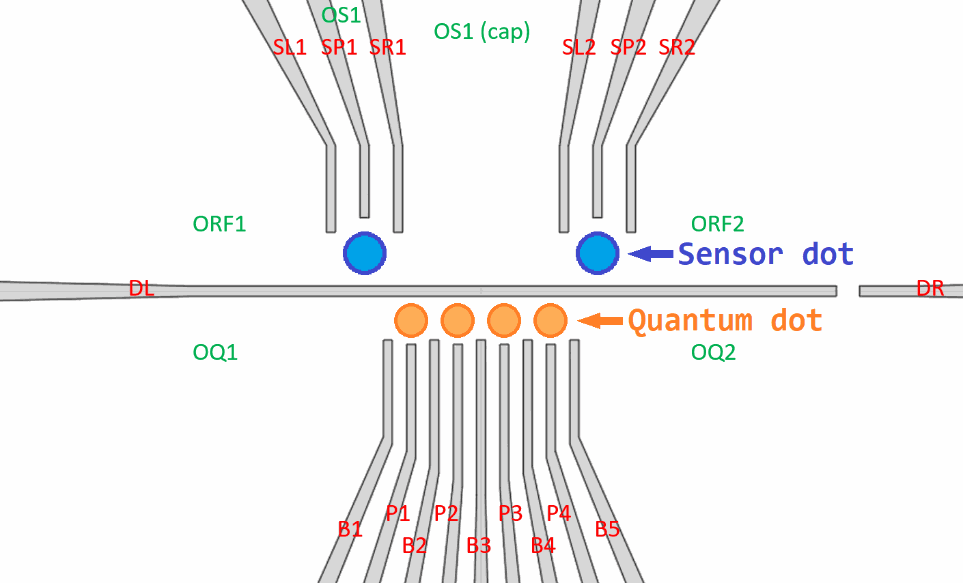Fabian Hader - DR project
Semiconductor Qubit Tuning Automatization
Doctoral Researcher: Fabian Hader
Local ZEA-2 Supervisor: Lotte Geck
Academic Supervisor: Stefan van Waasen, University of Duisburg-Essen (UDE)
Topic: Quantum Computing
Research Field: Information
Quantum computing is a cutting-edge technology attempting to harness the laws of quantum mechanics (such as entanglement and superposition) to solve specific problems that are too complex for classical computers. Possible use cases are, for example, prime factorization of numbers (Shor's algorithm [1]), searching unstructured databases (Grover's algorithm [2]), optimization problems, and pharmaceutical development [3]. A quantum computer uses so-called qubits to calculate and store data, which, in contrast to classical bits, do not store one fixed value but a superposition of two values. Thus, n qubits can represent 2n states simultaneously [4]. However, when reading out qubits, the system is forced to decide on one fixed value.
Qubits can be realized, among other things, by quantum dots capturing electrons and then using their quantum properties. This research focuses on spin qubits implemented as quantum dots in semiconductor heterostructures (GaAs/AlGaAs). A fully functional quantum computer requires a large number of such qubits. However, scaling the number of qubits in a quantum computer is a challenging task, i.a., because each qubit must be precisely tuned to its individual operating point.
The tuning of qubits involves a series of highly complex steps in which the desired properties are set progressively [5]. First, in an early fundamental regime tuning step, one adjusts the gate voltages to generate isolated trapped electrons regions (dots). Then, the charge state tuning adjusts the number of electrons in each dot, typically one per dot.
Both steps rely on so-called charge stability diagrams (CSDs) to determine the required voltage configuration. CSDs (e.g., Fig. 2) are recorded as a function of the two plunger-gate voltages of two neighboring dots (e.g., P1 & P2 in Fig 1.), forming a so-called double-dot. In the end, entirely tuned double dots can operate as singlet-triplet spin qubits.
The research focuses on developing algorithms to reliably and automatically tune the dot regime and charge state. Unfortunately, available experimental CSD data often do not represent the quality margin of the measurements, are unlabeled and ambiguous even to humans, and contain only cutouts of the voltage space of interest. However, successful algorithm development and benchmarking require complete labeled data. Therefore, in a first step, the research also focuses on the simulation of CSD data.


References
[1] Shor, P.W. (1994). "Algorithms for quantum computation: discrete logarithms and factoring". Proceedings 35th Annual Symposium on Foundations of Computer Science. IEEE Comput. Soc. Press: 124–134. doi:10.1109/sfcs.1994.365700. ISBN 0818665807. S2CID 15291489
[2] Grover, Lov K. (1996-07-01). "A fast quantum mechanical algorithm for database search". Proceedings of the Twenty-eighth Annual ACM Symposium on Theory of Computing. STOC '96. Philadelphia, Pennsylvania, USA: Association for Computing Machinery: 212–219. arXiv:quant-ph/9605043. Bibcode:1996quant.ph..5043G. doi:10.1145/237814.237866. ISBN 978-0-89791-785-8. S2CID 207198067.
[3] https://research.aimultiple.com/quantum-computing-applications/ (Visited on 06/12/2022)
[4] C. O'Connell. Quantum computing for the qubit curious. URL: https://cosmosmagazine.com/physics/quantum-computing-for-the-qubit-curious. (Visited on 06/12/2022).
[5] Zwolak, Justyna P., und Jacob M. Taylor. "Colloquium: Advances in automation of quantum dot devices control ". arXiv:2112.09362 [cond-mat, physics:quant-ph], 17. December 2021. http://arxiv.org/abs/2112.09362.
- Central Institute of Engineering, Electronics and Analytics (ZEA)
- Electronic Systems (ZEA-2)
Room E1

